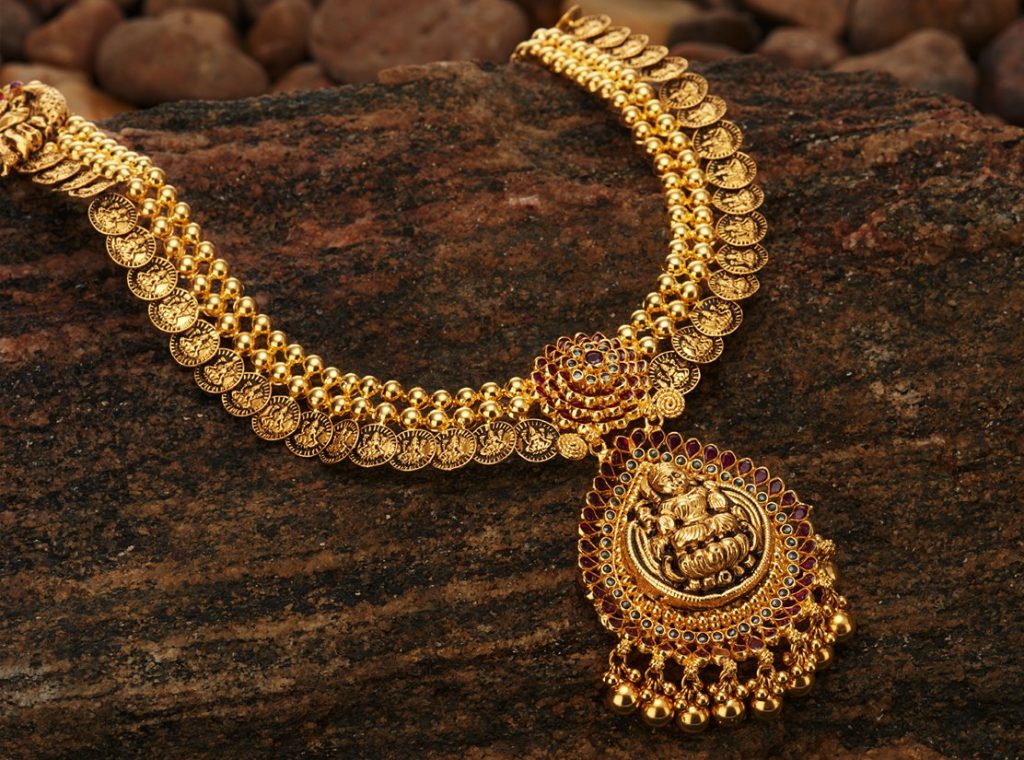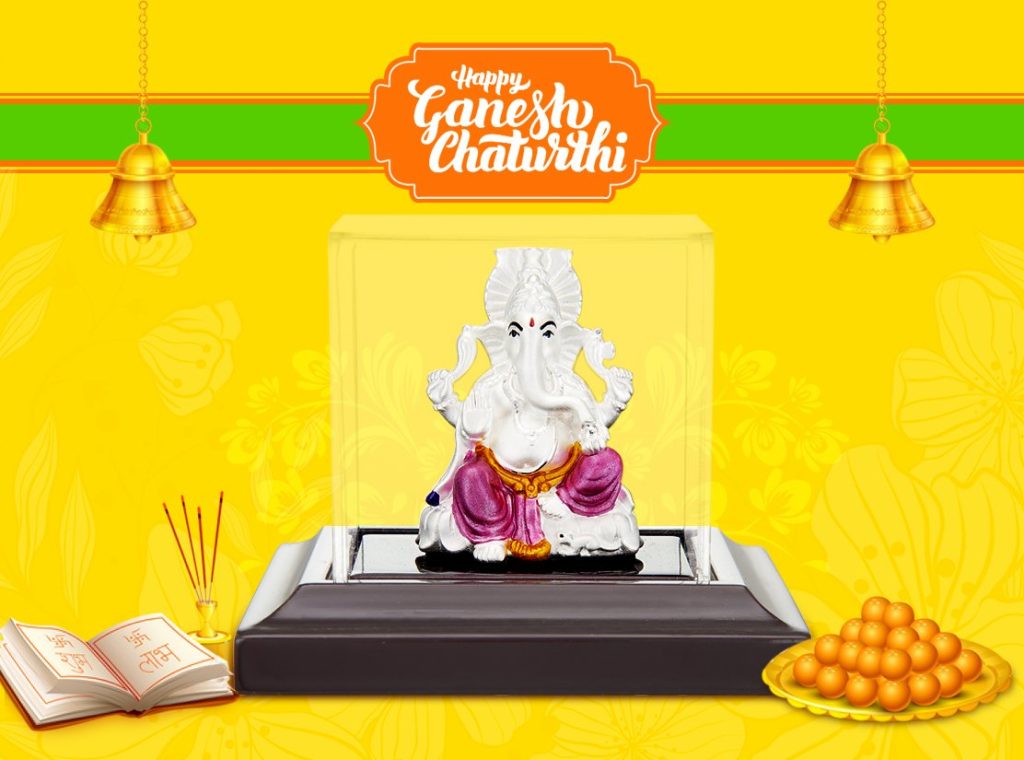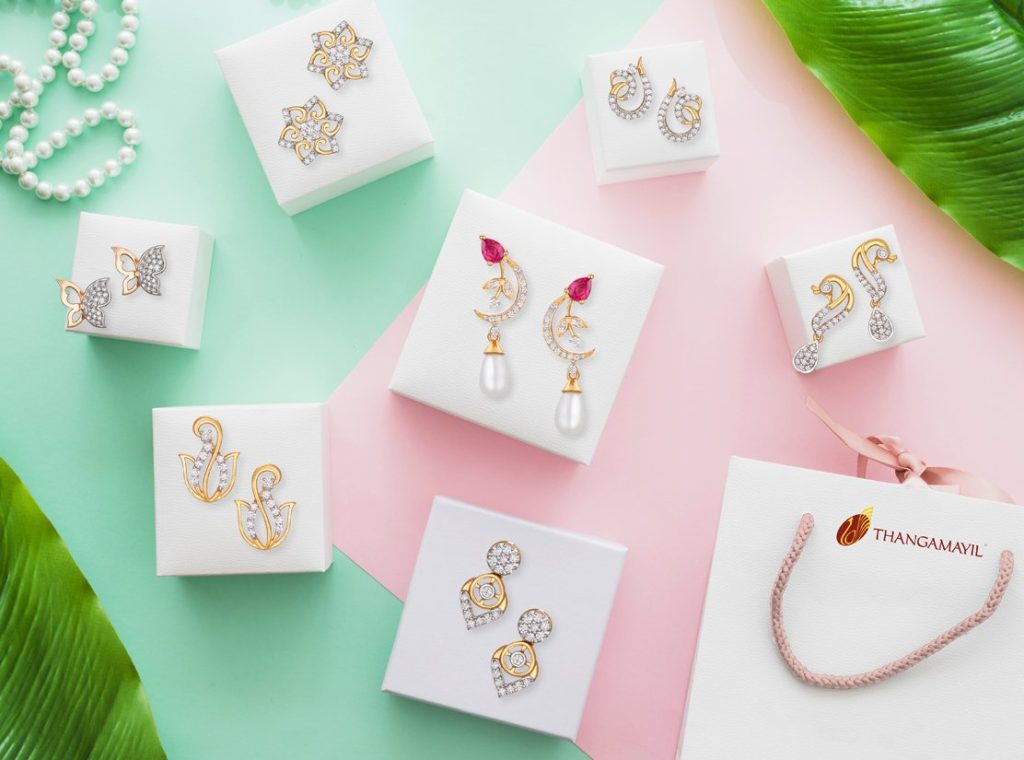Every woman loves to dazzle in resplendent gold necklace, whether it is to be the apple of all eyes at her own wedding or to catch attention at a best friend’s wedding. The lure of traditional motifs and designs still stands strong, especially for rituals and festivals of traditional significance such as weddings and religious ceremonies. Not even the trendiest of neckpieces can beat the charm of an intricately woven gold malai or gold chain- a lovely expression of all the worldly beauty in a single ornament for the neck. Addigai and Charam also form good choices for adorning the neck.
Long Necklaces-Inspired by Indian Folklore
A gold haram or malai has been the epitome of womanly elegance since the time of Indian folklore. Tales of adornment have seen the dawn of day from epics such as Ramayana and Mahabharata. In fact, South Indian traditions unveil a host of different gold haram designs, crafted creatively from the best of gold, sourced from the copious gold mines of the south namely, Karnataka, Andhra Pradesh, Tamil Nadu and Kerala.
Legend goes that the famous Kolar gold mine in Karnataka was known to yield the precious metal much before the Britishers took over and formalised gold mining in the area. Some say, archaic gold excavations date back to the times of the Mahabharata! While we may not find the answers to these mysteries of the past, now buried in the murky underground, it is clear that gold has come to be the revered and loved like no other material. In fact, gold has gotten so intrinsically woven into customs and traditions, that a ceremony without 22 KT gold attending it, is unthinkable! So much so that till date, pretty brides swoon over pretty pieces of gold necklaces. Here are some of the malais that seem to bowl over our beautiful brides!
Mango Mala / Managa Haram
A traditional heavy necklace meant to drop down till the waist, the managa malai is back in vogue! It derives its name from the fruit mango, thanks to its mango-shaped elements. Mango is considered a symbol of love and fertility, and hence a maanga malai is considered auspicious for the bride. Its heavy craftsmanship and jewel-studded appearance lends a look of flamboyance to the bride, signifying it’s her D Day! Eloquent and ethnic at the same time, it is a beautiful representation of all things nostalgic. Mango haram designs could be seen in quite large numbers, as it is an all-time favourite for many traditional jewel lovers.
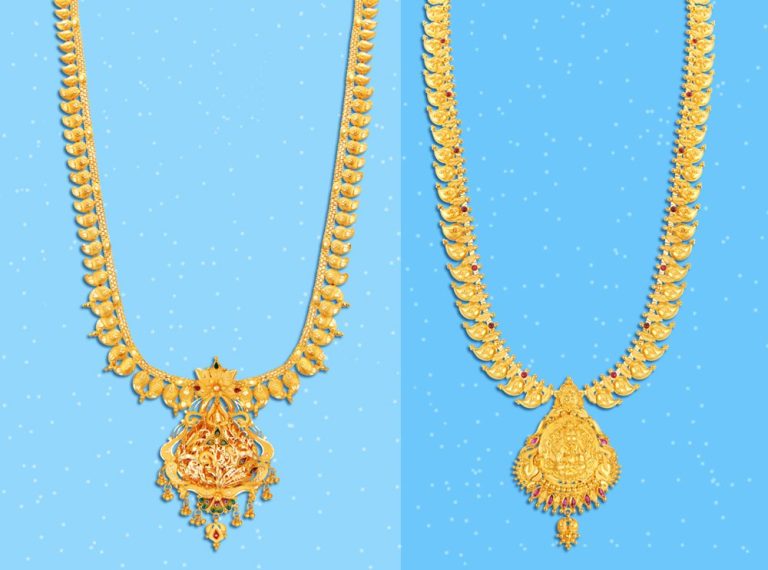
Kasu Mala / Kasu Haram
A superlative traditional necklace originally belonging to Kerala, the Kasu malai lends the wearer a unique appearance thanks to the coin-shaped embellishments that are woven together to create this marvel. The coins are often embossed with motifs or shapes of deities to add a sacred touch. This malai is the epitome of richness and prosperity, and is sure to grab eyeballs with its lustrous sheen and exclusive design.
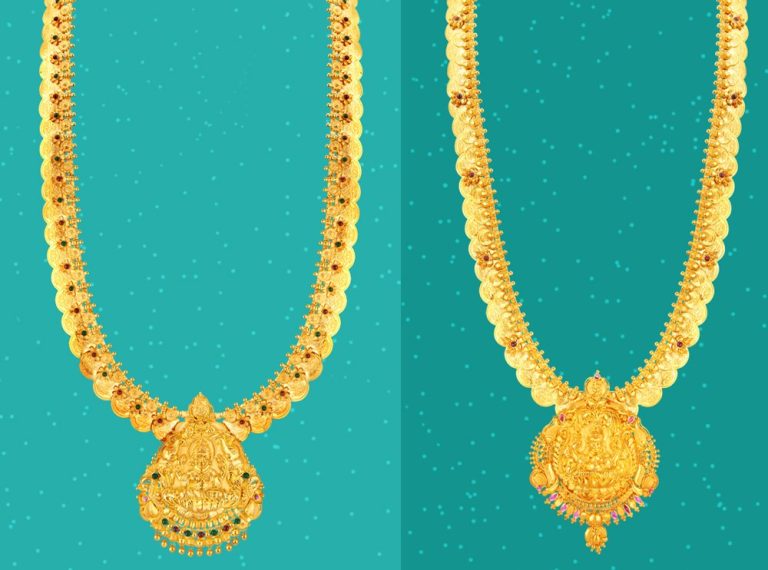
Set with heart-shaped motifs, usually in emeralds and rubies, the Palakka Mala remains a favourite with modern brides.
Gundla Mala / Gundla Haram
This masterpiece is created by using a dull polish to create an antique look. The Gundla haram is a necklace made of gold balls or gold beads on a long chain, giving a very typical traditional appearance to the wearer.
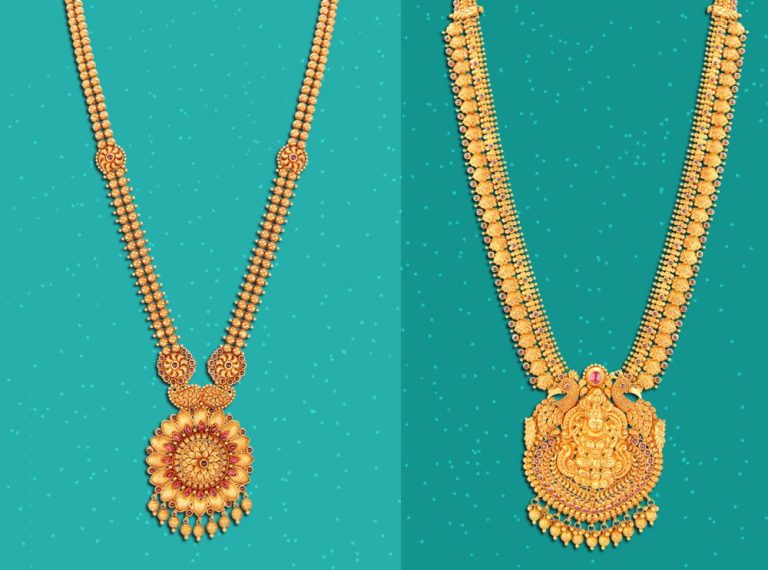
Stone Malai
A blend of gold and pearl makes up for an ideal type of necklace from Tamil Nadu, a one-of-a-kind adornment. The smooth sheen of the pearls sets subtly in the golden glow of gold. Often, a heavy gold pendant with peacock and lotus embellishments is set at the end of the stone Malai, giving it a royal touch! A treat for eyes!
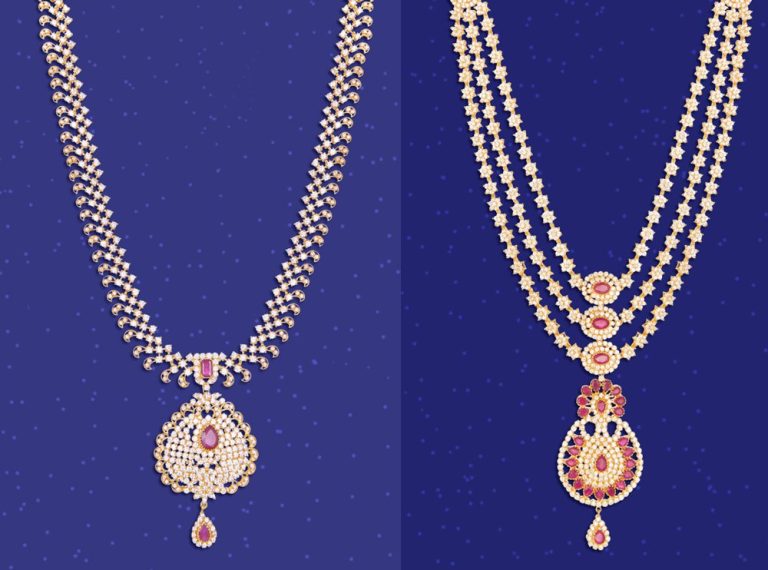
There’s a whole world of differently styled malais out there- traditional and trendy, heavy and delicate, bridal and others. The Indian gold lover, either for a 22KT gold ornament or any other gold piece, is truly spoilt for choice! Thangamayil specialises in making the buyer comfortable and take a decision based on what her heart truly loves and will continue to love for a lifetime! Just like the love of her life!
